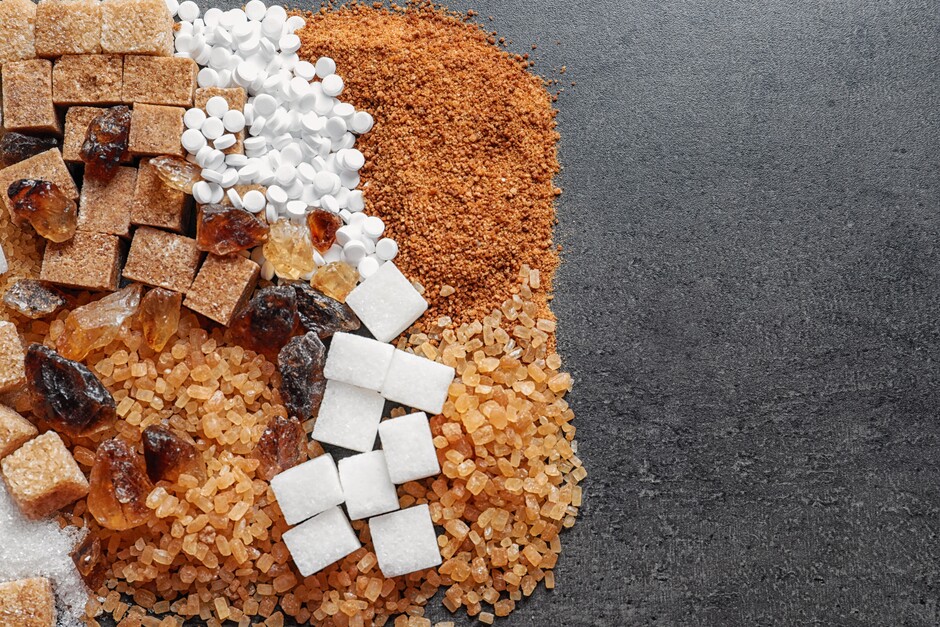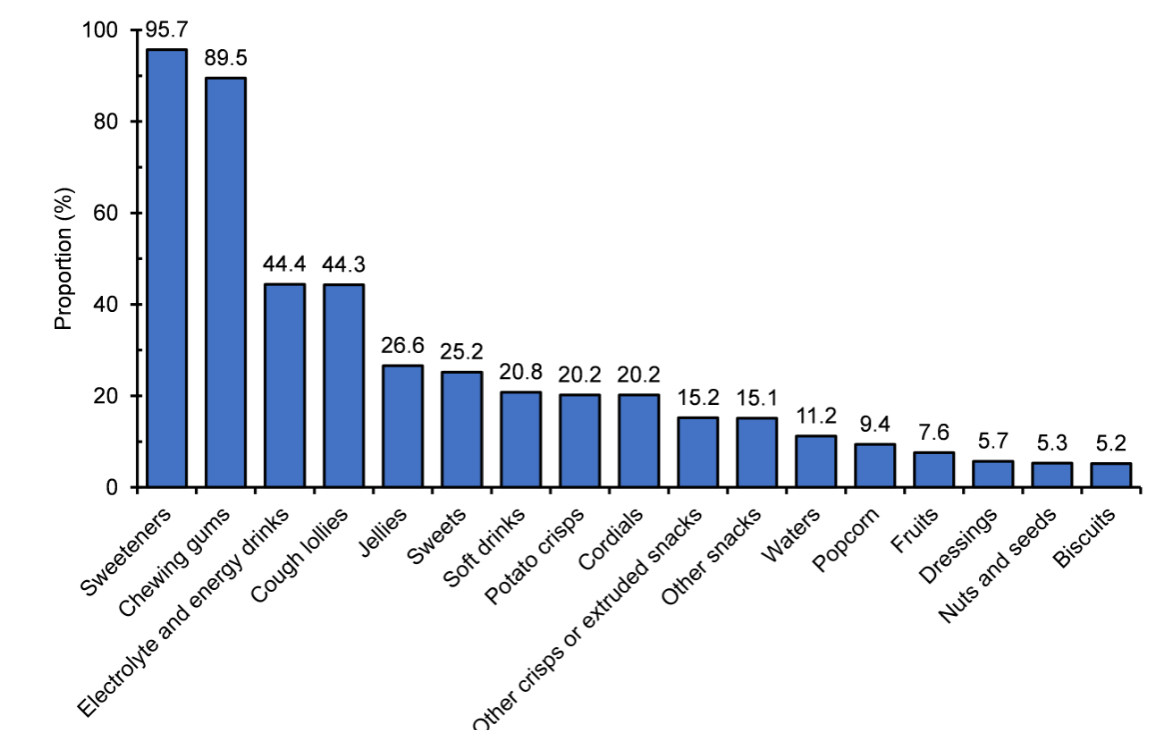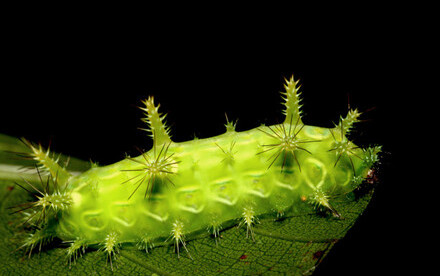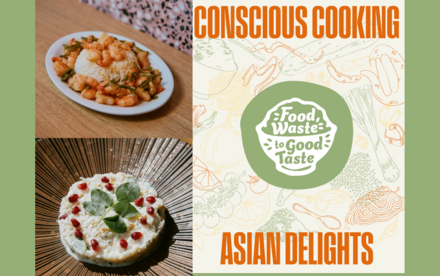13 Jul 2021
Sweeteners in common food: HKU-led research revealed hidden sources of non-nutritive and low-calorie sweeteners in pre-packaged foods in Hong Kong

Since the release of the WHO guidelines, food manufacturers have been working voluntarily or under the government’s request to reduce the sugar content of their products.
Excessive intake of free sugars, defined by the World Health Organization (WHO) as “all monosaccharides (e.g. glucose and fructose) and disaccharides (e.g. sucrose) added to foods by the manufacturer, cook or consumer, plus the sugars that are naturally present in honey, syrups and fruit juices”, has been associated with many health problems, including obesity. Hence in a bid to curb the rise in the obesity epidemic, the WHO has released a new set of free sugar intake guidelines for adults and children in March 2015, which recommended a maximum intake of free sugars to less than 10% of total energy intake (e.g. ~50 g for a 2000 kcal /day diet); with a conditional recommendation of below 5% total energy intake.
Since the release of the WHO guidelines, food manufacturers have been working voluntarily or under the government’s request to reduce the sugar content of their products. One way in doing so without significantly altering the taste profile of the reformulated products is to replace sugars with non-nutritive sweeteners (NNS) or low-calorie sweeteners (LCS), also known as sugar substitutes. Sugar substitutes are compounds that will provide the sweet sensation when consumed, but less calories for the same level of sweetness delivered. Commonly known examples of sugar substitutes include aspartame, stevia and sugar alcohols, in which, aspartame is synthetic while stevia and most sugar alcohols are both natural.
Surprising food that contains sweeteners
It is considered safe if the consumption of sugar substitute is under the acceptable daily intake (ADI), although some side effects may be present, e.g. laxative effect for sugar alcohols. However, a recent study led by Assistant Professor Dr Jimmy Chun Yu LOUIE, and BSc (Food and Nutritional Sciences major) graduate Mr Billy Yin Sing O, both from the Research Division for Molecular & Cell Biology of The University of Hong Kong (HKU) audited the use of sugar substitutes in ~20,000 pre-packaged foods in Hong Kong, and found that sugar substitutes are present in much more types of products than the risk assessment modelling designed by the Centre for Food Safety assumed.
This audit is the first-of-its-kind in Hong Kong. The team examined 20 different types (see note 1) of NNSs and LCSs, of the 12 NNSs examined, 10 were found and 2 were not found; of the 8 LCSs examined, all were found. The study revealed that sugar substitutes are not only used in low-calorie/diet products, but also in regular products. Even more surprising is the discovery that a sizable proportion (15-20%) of savoury snacks such as potato chips and extruded snacks also contained at least one non-nutritive or low-calorie sweeteners in their formulation. Also, Asian prepackaged foods were more likely to contain NNSs/LCSs (10.1%) compared with those from other regions.
The study suggests that the popularity of using sugar substitute in common food products may increase the risk of going above the limit of ADI. For example, a person has to drink 14 cans of diet coke to go above the ADI if he only consumed aspartame in diet coke, but now aspartame may also be found in many other common food products, therefore the risk of going above the ADI is higher, which may increase the potential risk for health problem.
Potential impact is still uncertain
Results of this study echo the findings of similar studies in other countries (see note 2) that the use of non-nutritive and low-calorie sweeteners has become increasingly common, and had extended beyond low-calorie/diet products. That could be a public health concern due to their higher consumption frequencies than “diet” products and suggests the current risk assessment modelling is likely to underestimate the population’s exposures to non-nutritive and low-calorie sweeteners.
Consumers should be better educated on label reading (see note 3) to assist them in making informed choices. “Until more prominent labelling schemes, e.g. front of package warning labels are put in place, consumers should actively look out for the names and/or E-codes of sugar substitutes on the ingredients list of pre-packaged products to identify these hidden sugar substitutes,” said Dr Louie.
Sugar substitutes | Information | Proportion of audited products containing it |
Sucralose E955 | A chemically modified form of sucrose which is non-digestible and non-absorbable by humans, thus providing 0 calories. Commonly sold under the brand Splenda®. It’s about 300-1000 times sweeter than sucrose. | 1.9% |
Acesulfame K E950 | A heat stable synthetic sugar substitute which is zero calorie. It has a slightly bitter aftertaste; and is about 200 times sweeter than sucrose. | 1.6% |
Aspartame E951 | Aspartame is a synthetic compound which contains two amino acids, namely aspartic acid and phenylalanine, joint together as a methyl ester. In the body it is broken down into its constituent amino acids and a methanol molecule, and hence technically is provides 4 kcal/g. But since it’s about 200 times sweeter than sucrose, with the amount typically used the caloric contribution is negligible. | 1.3% |
Stevia E960 | Stevia, also known as steviol glycosides, is a natural sugar substitute derived from the stevia plant. It is not metabolized by the human body and hence provides 0 calories. It’s about 200 times sweeter than sucrose. | 1.0% |
Sorbitol E420 | It is a sugar alcohol which is about 60% as sweet as sucrose. It provides ~2.6 calorie per gram and is metabolized slowly compared with sucrose. | 2.9% |
Maltitol E965 | It is a sugar alcohol which provides ~2.5 calorie per gram for similar amount of sweetness (75-90%) as sucrose, and hence is used to replace sucrose in food products. | 0.6% |
Some sugar substitutes examined in the research

Categories most likely to contain sugar substitutes.

Assistant Professor Dr Jimmy Chun Yu LOUIE(on the left), and BSc graduate Mr Billy Yin Sing O from Research Division for Molecular & Cell Biology from HKU Science.
Note 1. The Artificial NNSs examined in the study include: E950, E969, E956, E951, E962, E952, E954, E955, E961, E959. Natural NNSs include E960 and E957. All LCSs examined could be considered natural.
Note 2. Relevant studies from other countries:
Non-Nutritive Sweeteners in the Packaged Food Supply-An Assessment across 4 Countries
Note 3.The Centre for Food Safety of Hong Kong has published “The Consumer Guide to Food Additives” which contains a list of the names and E-codes of sugar substitutes permitted for use in Hong Kong.
The journal paper can be accessed from here .







